



When a coast-to-coast drive isn’t practical, partner with a long-distance auto transport company you can count on.
For moves that span one or two states to several states, shipping a car across country is often the safest, most convenient option—no extra miles, no hotel stops, and no downtime from your daily life.
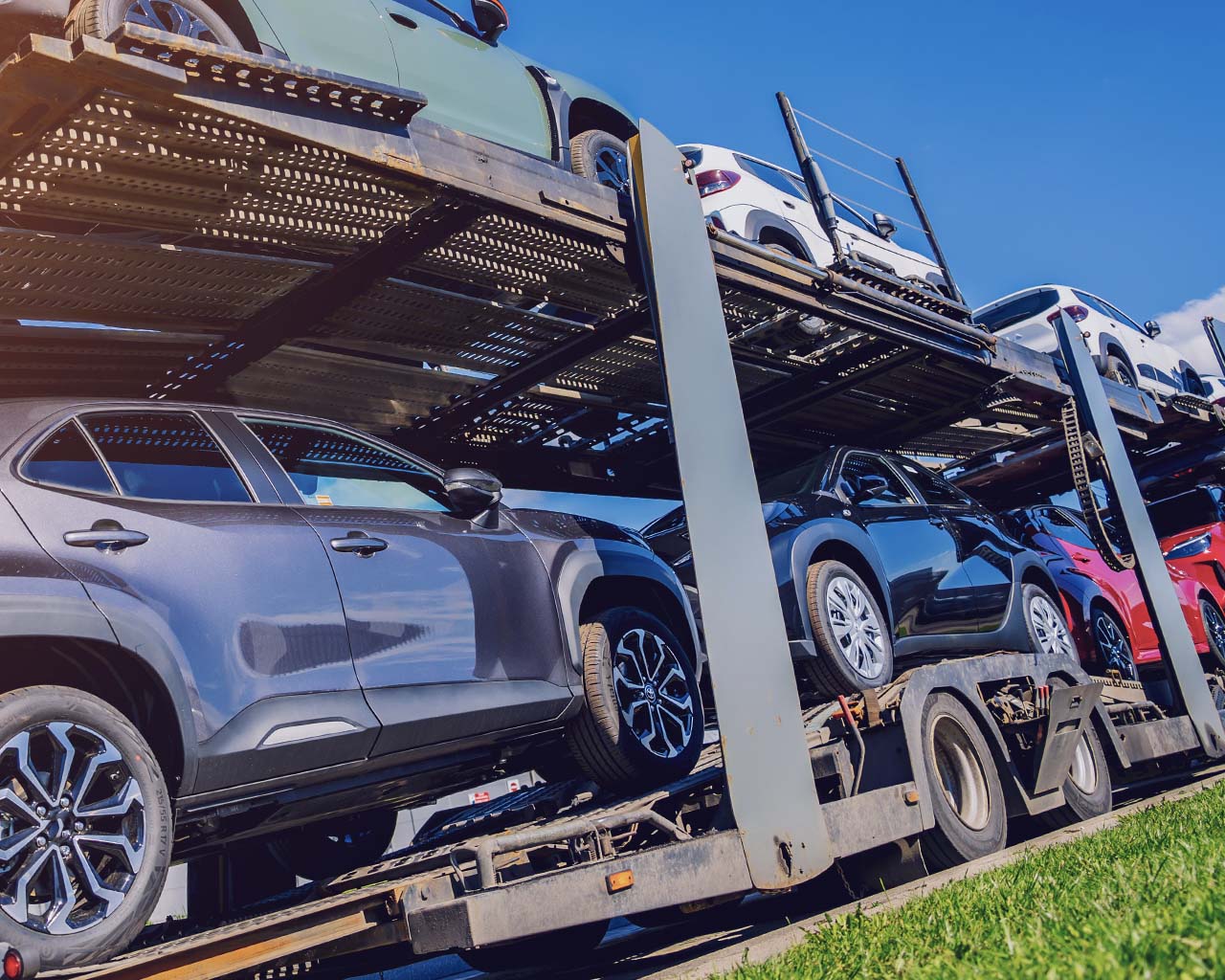
Experienced car shipping professionals match your vehicle with the right equipment and route so pickup and delivery are predictable, the service s reliable, and you keep your vehicle from wear and tear.
Our vetted network of licensed and insured carriers provides true door-to-door car shipping anywhere in the U.S.—whenever it’s safe and legal for a large hauler to access your street. If space is tight, we coordinate a nearby truck-friendly meet-point to keep loading quick and secure.
From quote to final walk-around, you’ll get clear communication, Bill of Lading inspections at both ends, and a seamless handoff designed for long-distance moves.
Whether you’re relocating, buying a car out-of-state, sending a car to college, or a seasonal snowbird, cross-country car shipping is the stress-free way to get your vehicle coast-to-coast without the miles, wear, or time on the road.
Americans move for new jobs, family, school, and fresh starts—and more of them are choosing to ship their car instead of driving. Cross-country car shipping lets you send a vehicle thousands of miles without piling on wear, risk, or time off the road. A professional carrier handles the your vehicle end-to-end so your vehicle and peace of mind are on the forefront..
Simply, it’s the easiest way to ship a car cross country: you book a pickup, a licensed carrier loads your vehicle, and the it is delivered to the destination you choose—often right to your door or a nearby truck-friendly spot.
Cross-country car shipping is the professional transport of a vehicle over long distances—typically across multiple states or coast-to-coast—using specialized auto-transport trucks. Instead of driving the car yourself or hiring a private driver, an auto-transport company loads your vehicle onto a commercial open or enclosed carrier and moves it on established freight lanes.
The process is designed to be simple: schedule a pickup window, complete a condition report at loading, track progress during transit, and perform a final walk-around at delivery. Door-to-door is standard wherever it’s safe and legal for a large truck; otherwise, a nearby meet-point keeps the handoff quick and secure.
At NX Automotive Transport we pair nationwide carrier capacity with a Price-Lock Guarantee and pro-level communication so you always know what’s happening and what it costs—before a truck ever rolls.
Before you book a coast-to-coast move, lock in the basics that keep your shipment smooth and predictable. The four areas below cover what most people overlook when they ship a car cross country—from how to prep the vehicle to the kind of trailer you choose, the insurance behind it, and when to get on the calendar.
Think of pickup day as a short, professional handoff. Clear the cabin and trunk of personal items, disable aftermarket alarms or kill-switches, and top off fluids without overfilling. Photograph the exterior (all sides and close-ups) so the condition is documented on the Bill of Lading. Leave roughly a quarter tank of fuel; for EVs, aim for 40–60% state of charge unless your driver requests otherwise. Note any quirks (low clearance, weak battery, custom aero) and provide a spare key to prevent delays.
You’ll choose between open and enclosed transport. Open carriers are the most common and budget-friendly, ideal for daily drivers and most SUVs—they load quickly and run on dense national lanes. Enclosed carriers add a fully covered environment for maximum protection and privacy, the right call for classics, luxury vehicles, fresh paint, or low-profile cars. For exceptionally low vehicles, ask for hard-side enclosed with a hydraulic liftgate to minimize ramp angles.
Professional carriers maintain cargo liability insurance, but the details matter. Confirm the coverage limit per vehicle, any deductibles, and exclusions (personal items are typically not covered). Make sure the carrier’s name on the paperwork matches the truck that arrives, and that the condition is recorded on pickup and delivery BOLs—those documents anchor any claim. Your personal auto policy may not cover commercial transit; verify how (or if) it coordinates.
Capacity moves in waves. For the best price and timing, reserve one to three weeks ahead of your target pickup—longer for enclosed trailers, remote origins, or peak seasons (summer moves, holidays, and the bi-annual snowbird rush). Expect a pickup window rather than a single timestamp; flexibility on dates and meet-points helps your dispatcher place the vehicle on a faster lane at a sharper rate. Expedited options exist if your timeline is fixed.
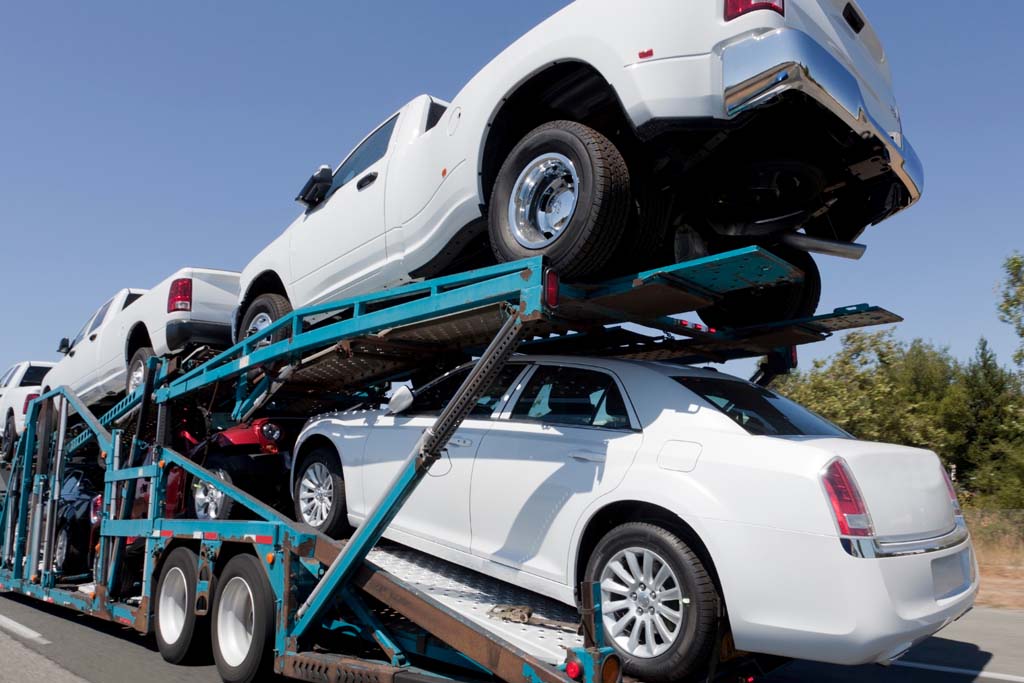
Most of what you pay to ship a car across the United States, you will incur are determined by size, weight, distance, and locations. In brief, when working with an auto shipping company, it can cost anywhere from 40-56 cents a mile to ship a car across depending on distance. So, for coast to coast you will pay the least per mile.
Miles matter, but the corridor matters more. Trucks favor major interstates and dense lanes where they can load efficiently; remote detours or out-of-the-way towns create deadhead miles that increase cost. Busy corridors (I-95, I-10, I-40) price tighter than sparse or mountainous stretches.
Supply and demand swing seasonally—snowbird peaks, summer moves, holiday slowdowns—affecting how quickly trucks fill and at what price. Storms, fires, and closures can force detours and longer ETAs, nudging rates upward; early booking during peaks helps.
Longer, taller, or heavier units consume more deck space and reduce the number of vehicles a carrier can haul, increasing per-unit pricing. Lift kits, oversized tires, racks, roof boxes, and aftermarket bumpers can require special positioning or lower-deck placement.
Inoperable vehicles require winching and extra labor, which adds a non-runner fee. If steering or braking is limited, additional equipment or personnel may be needed at pickup/delivery, impacting time and cost.
Open carriers deliver the best value; enclosed offers more protection at a premium due to lower capacity. More lead time lets us place your vehicle on optimal routes; tight windows or guaranteed dates often require expedited service. Flexibility on dates and meet-points can lower your final price.
Urban cores, cul-de-sacs, low-hanging branches, tunnels, and strict HOAs can prevent a 75–80 ft hauler from reaching your curb. We’ll coordinate a truck-friendly meet-point (large lot, wide road) to keep things safe and efficient. Islands, mountain towns, or ferry segments add time, tolls, and coordination costs.

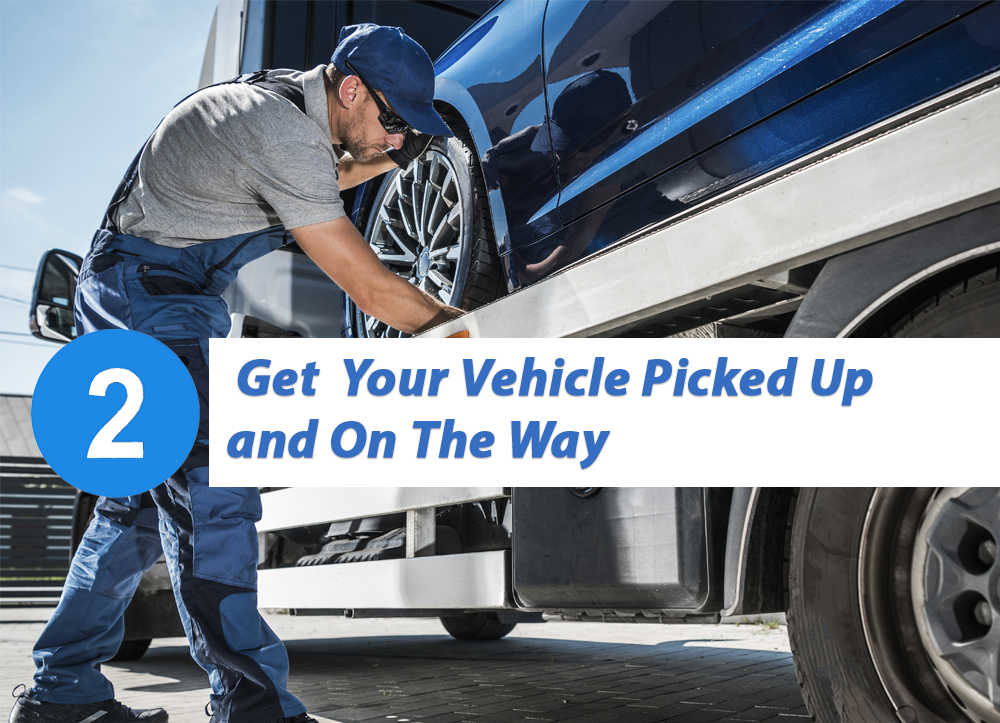
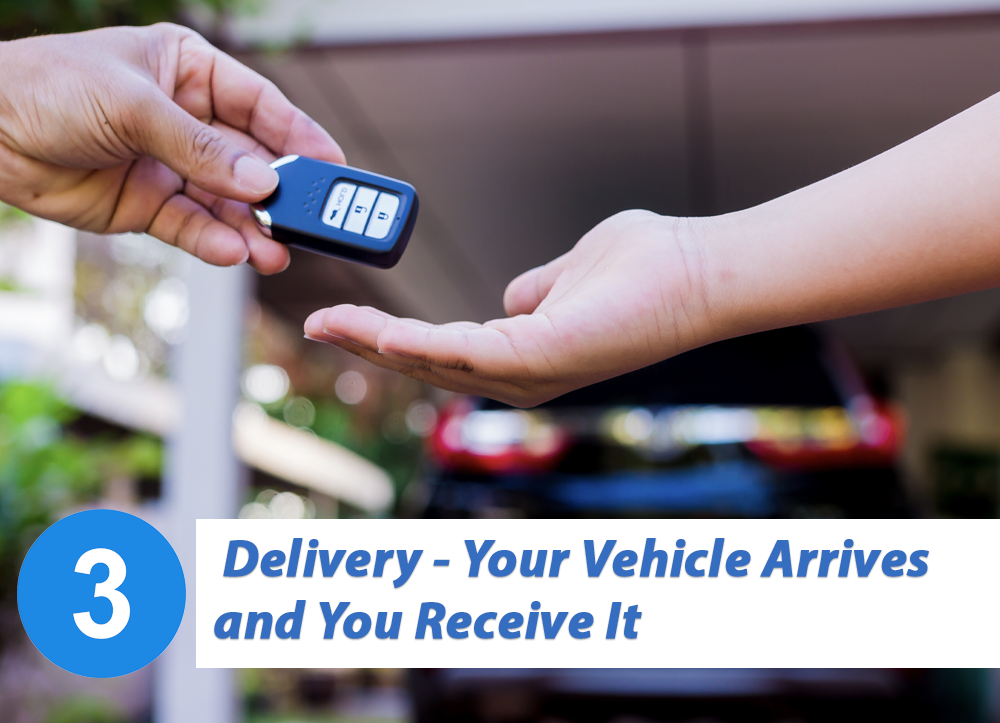
Use our car shipping calculator, or call our knowledgeable staff to get your price to ship and arrange for your vehicle to get picked up. We help customers ship cars across country to or from anywhere in the U.S. Remember to disclose anything about your vehicle we should know about to get the most accurate price and service.
Prepare your vehicle to be picked up. Make sure all items are removed from inside the vehicle, and it helps to have it clean allow for a thorough inspection that will be noted on the bill of lading . If your car does not run, it needs to be winched so make sure it's on a flat surface that is easily accessible. Your vehicle will now be loaded and underway.
Carriers travel where it is legally permissible and physically possible. If the carrier cannot reach your doorstep, they will speak with you ahead of arrival to coordinate delivery in a large parking lot or more open area. Upon arrival, carefully inspect the vehicle with the carrier and take note if any damage occurred with the pickup bill of lading in hand. If new damage is found, the driver must sign off on it for it to be claimed. Once the inspection is done, you will pay the driver the remainder balance or if prepaid, the carrier will release the vehicle and the delivery is complete.
Best overall value with the widest network, yielding faster pickups on most corridors. Ideal for daily drivers, fleet units, and most SUVs/pickups; cosmetic exposure to weather/road dust is normal but damage is rare with professional handling.
Fully covered transport shields your vehicle from weather, road debris, and visibility. Choose hard-side with a hydraulic liftgate for low splitters or long overhangs; perfect for high-value, collector, or freshly painted cars.
For fixed deadlines, show vehicles, or tight closing dates, dedicated routing reduces waiting and compresses transit. Capacity is limited and pricing reflects priority handling—book earlier than you think you need.
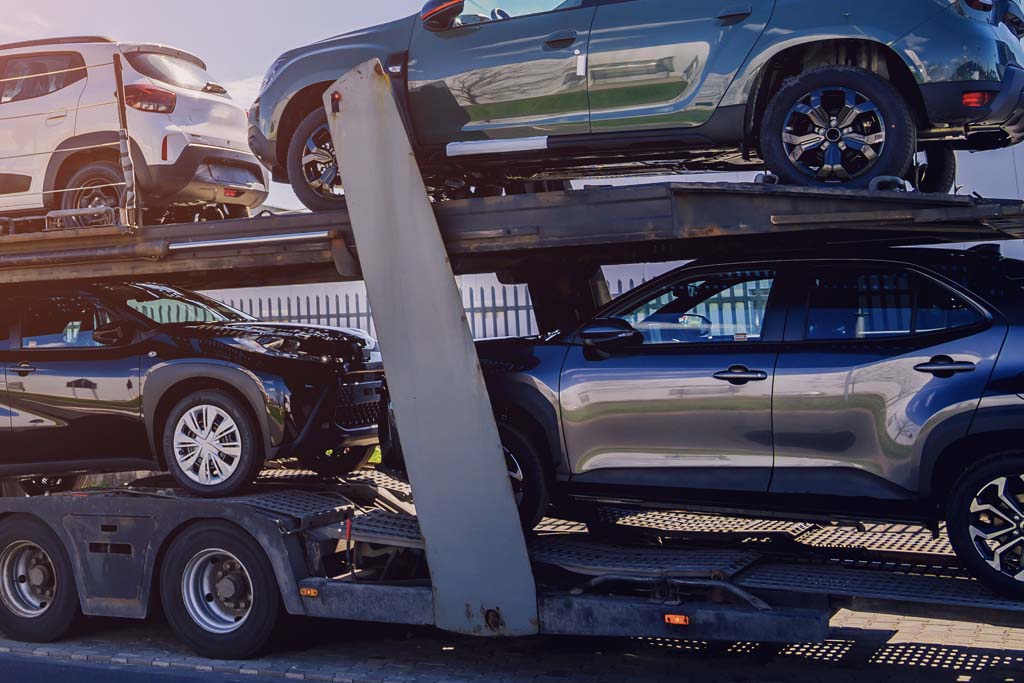
There are various factors involved in calculating the time it takes. Shipping a car across nearby states can take 1-3 days. While coast to coast can an take up to 9 or 10 days. Ultimately, distance determines how long it takes to ship your car.

If you are looking for the cheapest method to ship a car across country without any compromise in insurance coverage or safety, you can opt for open carrier cross country auto transport. Terminal to terminal is the cheapest when combined with open carrier. Most customer pick open carrier with door-to-door shipping for the lowest price and the most convenience.
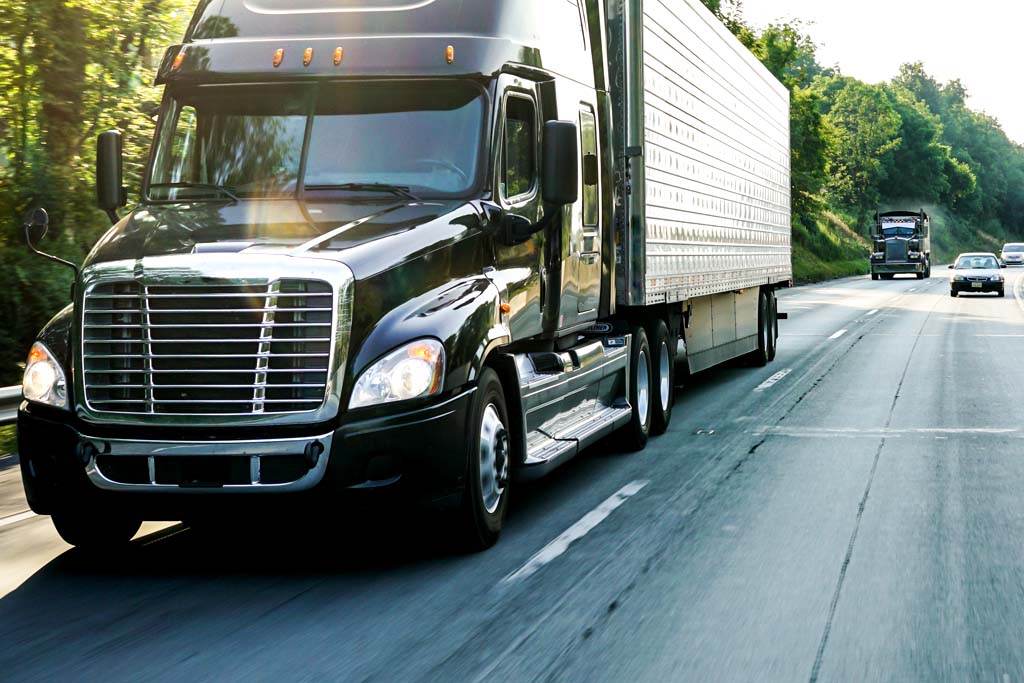
If you are looking for the safest way to ship a car across country with an extra layer of protection, higher insurance coverage, and safety, you can opt for enclosed cross country auto transport. However, the price to ship enclosed is usually 40-60% more.
Pickup is usually a window, not a single timestamp—flexibility helps secure the right truck. Transit varies by mileage, route density, weather, and equipment; enclosed can add time due to loading and routing constraints. We’ll provide a realistic range and keep you posted as the driver moves.
A clean surface makes small dings and scratches easier to see during the BOL inspection. Take time-stamped photos of all sides plus close-ups; keep them with your paperwork.
Motor-carrier cargo policies cover the vehicle, not household goods. Lighten the cabin and trunk to avoid weight issues and prevent shifting during transit.
Leave roughly a quarter tank of fuel—enough for loading and unloading without adding excess weight. For EVs, follow the driver’s request (often 40–60%) to balance range with battery safety during loading.
Remove toll tags and parking permits so you don’t rack up distance charges en route. Fold mirrors and secure loose aero pieces to reduce the chance of wind-related movement.
Provide a spare key and any alarm/immobilizer instructions to avoid delays at pickup or delivery. Share unique start sequences, low-clearance notes, or battery concerns so the driver can plan loading method.
If a multi-car hauler can’t safely access your street, we’ll meet at a nearby truck-friendly area—large lot, wide road, or shopping center—to keep the transfer safe and quick. For gated communities/HOAs, pre-clear the truck or arrange a meet-point outside. City cores with tight turns are common; coordination up front prevents last-minute scrambles.
Every NX-assigned carrier must carry active federal operating authority and cargo insurance, verified before dispatch. Your protection starts with the BOL condition report at pickup and ends with the signed BOL at delivery—document both ends with photos. Personal items are not covered by motor-carrier cargo policies; keep valuables out of the vehicle.
Unrealistic teaser rates often fail to attract a real truck, leading to delays and ‘we need more money’ calls. Choose transparent, written pricing that reflects actual market lanes and seasonality.
If a broker can’t provide the assigned carrier’s identifiers before pickup, that’s a red flag. Always verify the carrier’s operating status and insurance in public databases before handing over keys.
Insist on written terms that explain payment timing, cancellation rules, and BOL procedures. Clarity protects both sides if weather or routing changes affect timing.
You should know the carrier name and have a direct contact number before the truck arrives. This reduces miscommunication and helps coordinate access, parking, and paperwork.
Excess cargo isn’t covered and can trigger refusals, re-quotes, or overweight issues at weigh stations. Keep contents minimal and secure to avoid delays and extra fees.
Your written rate is locked the moment you reserve, so the number you approve is the number you pay. No mid-route ‘market adjustment’ surprises or last-minute add-ons—ever. This gives you a clean paper trail for budgeting and internal approvals.
We don’t collect a broker fee and disappear. You pay nothing until we formally match you to a specific, vetted carrier with name, MC/US DOT, and contact information. This removes the incentive for anyone to “hold” your order while shopping for a truck that may never materialize.
When it’s safe and legal for a multi-car hauler, we come as close to your curb as possible. If access is tight (HOAs, cul-de-sacs, low trees), we coordinate a nearby truck-friendly meet-point so the handoff is quick and stress-free.
Choose open for best value and fastest availability, or enclosed for maximum protection and privacy. For low-clearance vehicles, we recommend hard-side enclosed with a hydraulic liftgate to reduce ramp angles and splitter risk.
Every assigned carrier must show active federal operating authority and current cargo liability insurance. We verify status before dispatch and provide their identifiers so you can double-check in public databases if you prefer.
We communicate before, during, and after pickup so you never have to chase status. If weather, traffic, or routing changes occur, we’ll reach out with options and new ETAs.
Classics, exotics, EVs, dually pickups, inoperable units—each has unique handling and loading needs. We brief the driver on specifics (start sequences, ground clearance, tow points) to avoid surprises at the curb.
If you can be flexible, we’ll target optimal lanes and loading days to sharpen pricing. If your dates are fixed, our expedited and single-unit options compress timelines with dedicated routing.
Get your guaranteed quote in minutes. Lock your rate with NX’s Price-Lock Guarantee. Relax—NX handles carrier vetting, paperwork, and communication from start to finish so you can focus on the move.
When sending a car from one side of the country to another, daily drivers and most regular vehicles do great on open carriers when it comes to value and faster availability. High-value, collector, or freshly painted vehicles benefit from enclosed—ideally hard-side with a liftgate to minimize ramp angles.
Earlier is better, especially for enclosed trailers, remote origins, or peak seasons. Lead time lets us place your vehicle on stronger routes and avoid paying premiums for last-minute capacity. At the minimum, one week prior.
We recommend against it these items are not covered by insurance. . Carriers’ cargo policies cover the vehicle, not personal items, and a lot of extra weight can cause delays or charge for the weight. If something must travel, keep it light, be honest about it, and have it sit below window level.
Ask for the assigned carrier’s legal name and MC/US DOT numbers and verify them in public databases. Confirm that the truck showing up matches what you were given—same company name and identifiers.
We coordinate a truck-friendly meet-point nearby—large lot, wide road, or shopping center. This is common in urban cores and gated communities and keeps loading safe and efficient.
There isn't insider pricing or special deals others get that we cannot.
We believe in giving jobs to our community. All sales staff is here in the USA.